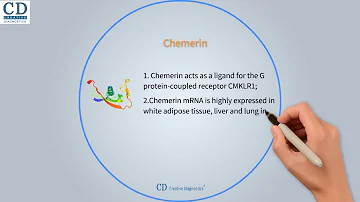Was machen Adipokine?
Is resistin an adipokine?
More recently, resistin, was also discovered as an adipokine released from adipose tissue. Here we review the effects of resistin on sympathetic nerve activity and compare the effects to those of leptin, and discuss their potential interactions that may contribute to cardiovascular dysfunction.

What are adipokines examples?
Adipokines (also called adipocytokines) are cell-signaling molecules (cytokines) produced by the adipose tissue that play functional roles in energy/metabolic status of the body, inflammation, obesity, etc. Notable examples of adipokines include leptin, adiponectin, resistin, interleukin-6, and tissue necrosis factor.
What are the types of adipokines?
The adipokines include leptin, adiponectin, resistin, visfatin (from visceral fat), retinol-binding protein 4 (which induces insulin resistance), and vaspin (found in visceral fat and has insulin-sensitizing actions).
What are Myokines and adipokines?
Skeletal muscle and adipose tissue are the two largest organs in the body. Skeletal muscle is an effector organ, and adipose tissue is an organ that stores energy; in addition, they are endocrine organs that secrete cytokines, namely myokines and adipokines, respectively.
How many adipokines are there?
It is also an endocrine organ that secretes various cytokines, chemokines, and hormonal factors, or adipokines, that regulate diverse processes including feeding behavior and immunity. To date, more than 600 adipokines have been identified, not including fatty acids and other metabolites [11].
Are adipokines good?
Adipokines are involved in a 'good–bad', yin–yang homoeostatic balance whereby there are substantial benefits: cardioprotection, promoting endothelial function, angiogenesis and reducing hypertension, atherosclerosis and inflammation.
Which of the following is an adipokine?
Adipokines are the factors produced by adipose tissue. The most important of them are leptin, resistin and adiponectin [6].
What adipokine is anti-inflammatory?
Adiponectin, C1q/TNF-related proteins (CTRPs), omentin, and secreted frizzled-related protein 5 (SFRP5) are anti-inflammatory adipokines produced by adipose tissue. Adiponectin is the best-known and most abundant adipokine found in human serum, with concentrations typically in the µg/mL range.
Which adipokine promotes inflammation?
ANGPTL2. It was recently reported that ANGPTL2 functions as an adipokine that promotes inflammation and insulin resistance81.
How do you reduce adipokines?
Moderate aerobic exercise increases anti-inflammatory adipokines partly via reducing adipose tissue mass. Physical exercise-induced myokines might mediate beneficial effects via a cross-talk with adipose tissues.


